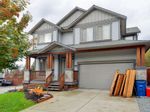Posted on
October 20, 2016
by
Paul Liberatore
We have listed a new property at 24819 106B AVE in Maple Ridge. Gorgeous home in Highland Vistas backing on to greenbelt! Engineered hardwood flooring, open concept plan, and lots of natural light. Huge living room with 18' ft vaulted ceilings. Gas fireplace, granite counters, dark wood cabinets, gas range and more. 3 bedrooms upstairs and 1 bedroom mortgage helper downstairs. Huge master bedroom with walk in closet. Finished basement with kitchen and seprate entrance. Minutes away from Samuel Robertson Technical Highschool. Too many upgrades to list. This designer home is a pleasure to show! Open House Sunday October 23rd from 2-4pm.
Posted on
October 14, 2016
by
Paul Liberatore
We have sold a property at 1225 GARDEN DR in Vancouver. Stunning and pristine 1 owner home in the heart of East Vancouver. This Italian built home situated on a perfect flat CORNER lot. The best layout in this Vancouver special. Features granite counters, gas stoves, fridge with water hookup, 2 wood burning fireplaces, laundry room with sink, beautifully tiled and hardwood through out, cantina cold storage, and an extra converted spice kitchen. Huge 300 square foot south facing sun deck. Custom built with attention to detail. Steps to shopping on Nanaimo street, close to transit and schools. Manicured front and back yards. Pride of ownership shines thru this home. A pleasure to show!
Posted on
October 8, 2016
by
Paul Liberatore
We have sold a property at 110 7 RIALTO CRT in New Westminster. Rare opportunity to purchase a loft in the Murano Lofts w/ a 250 sqft. large patio-huge bonus! This 1 bedroom, 1.5 bathroom features hardwood flooring, reclaimed brick wall acsent, granite counters, 17' ceilings, sleek stainless steel appliances, gas cooking range, rich maple shaker cabinets, Kohler fixtures & a gas fireplace. BONUS Floor-to-ceiling windows allow plenty of natural light during the day w/ a stunning city view. Please note this unit is not ground floor actually above ground! Building has a gym, live-in caretaker, entertainment room, garden area & guest suite. 1 Parking stall & Rentals/2 pets OK! Amazing location-close to transit, Quay, shopping, dog park & so much more! Rents for $1500 per month-tenanted.
Posted on
October 3, 2016
by
Paul Liberatore
We have sold a property at 11824 STEPHENS ST in Maple Ridge. ONE LEVEL LIVING..... 2317 SQ. FT. 3 BDRM/3 BATH PLUS OFFICE RANCHER ON 9450 SQ. FT. LOT.......Hardwood flooring, Great Room concept with soaring vault ceiling and bright, open Kitchen, large breakfast bar and loads of granite counter space/and cabinets + pantry, 20x21 living room w/gas FP, huge Master (15x21) with W/I and 3 pc private bath w/shower. and electric F/P. Large covered deck with vault ceiling, natural gas outlet for BBQ. Privacy hedge in front and rocking chair porch at entry to spacious foyer. IDEALLY LOCATED minutes from downtown shopping, recreation, arterial routes and 1/2 block from Golden Ears Elementary School and short walk to Thomas Haney Secondary. Don't wait on this one......
|

The data relating to real estate on this website comes in part from the MLS® Reciprocity program of either the Greater Vancouver REALTORS® (GVR), the Fraser Valley Real Estate Board (FVREB) or the Chilliwack and District Real Estate Board (CADREB). Real estate listings held by participating real estate firms are marked with the MLS® logo and detailed information about the listing includes the name of the listing agent. This representation is based in whole or part on data generated by either the GVR, the FVREB or the CADREB which assumes no responsibility for its accuracy. The materials contained on this page may not be reproduced without the express written consent of either the GVR, the FVREB or the CADREB.
 Subscribe with RSS Reader
Subscribe with RSS Reader











